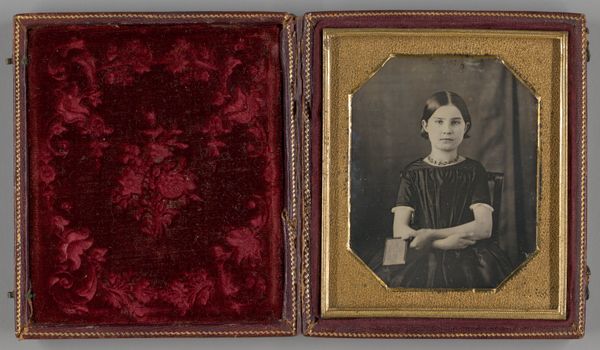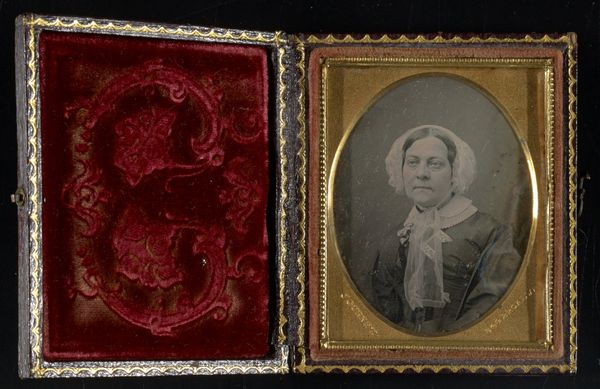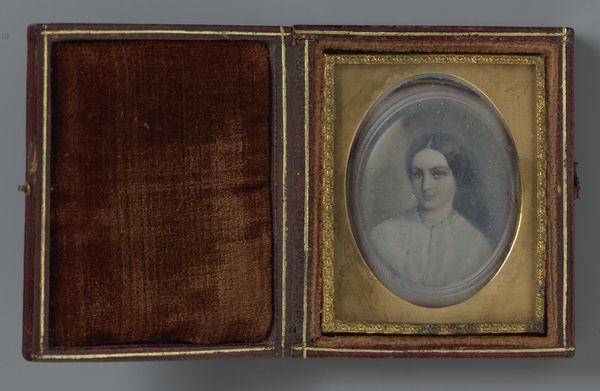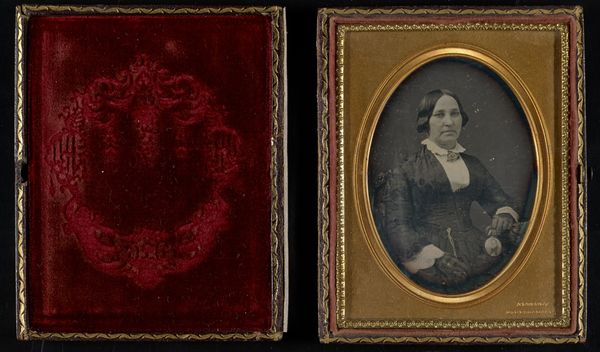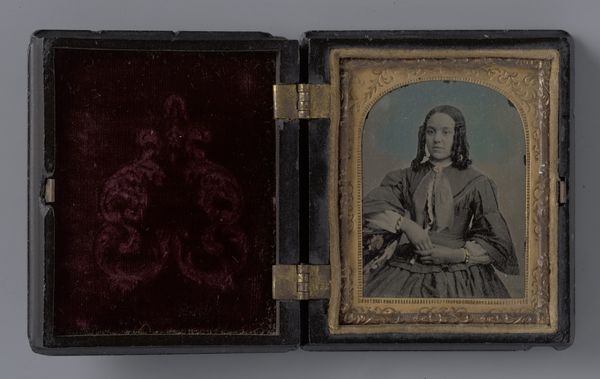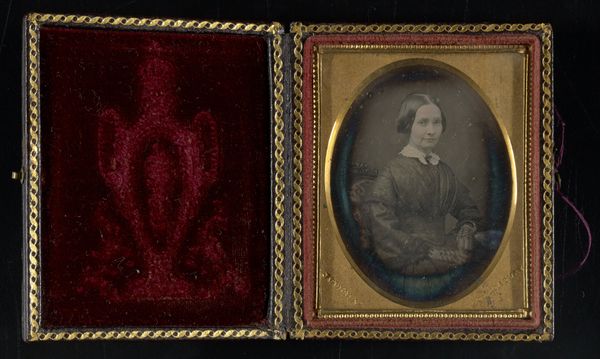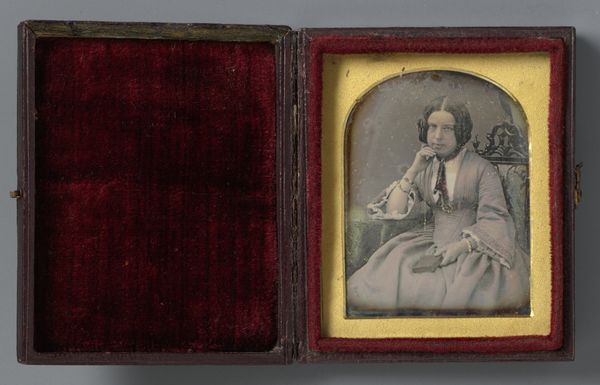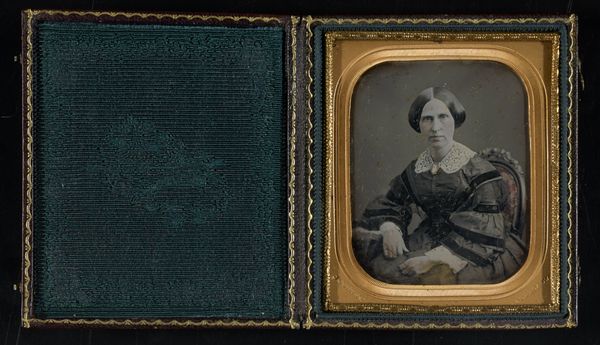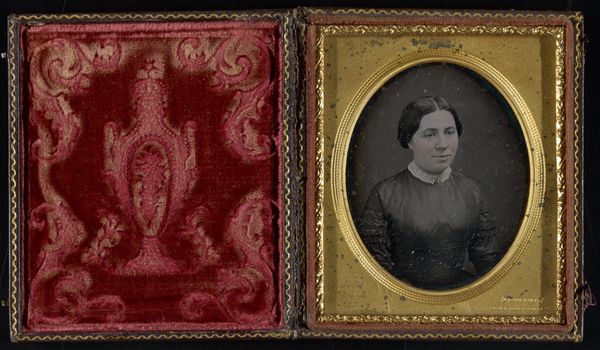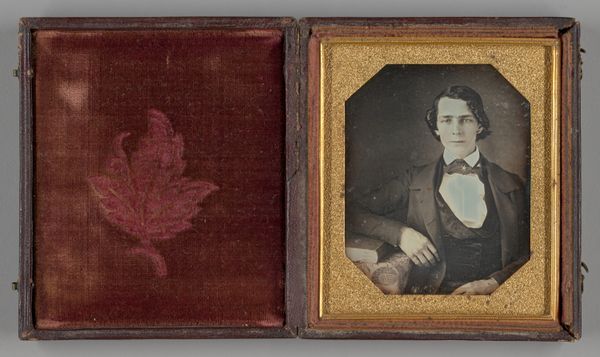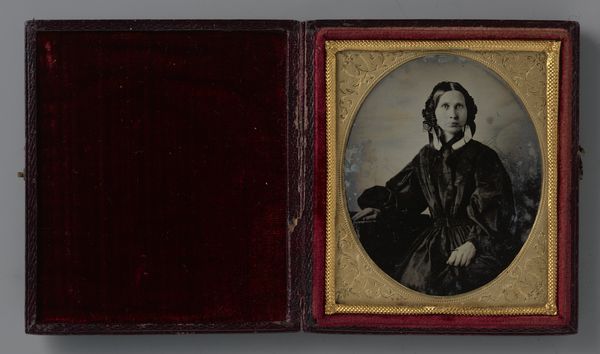
daguerreotype, photography
#
portrait
#
16_19th-century
#
daguerreotype
#
photography
#
realism
Dimensions: height 69 mm, width 56 mm, height 92 mm, width 80 mm, thickness 13 mm
Copyright: Rijks Museum: Open Domain
This is a portrait of an unknown woman with earrings by W.P. Beck. We don't know when it was made, but the photographic process gives us a clue. This isn't paper, but a metal plate coated with light-sensitive chemicals – what's known as an ambrotype. Making ambrotypes was a tricky business. The photographer had to be both a skilled chemist and a practiced artist. And while it was much faster than painting a portrait, it still took time and care to get right. You can see in the image how the plate has been hand-tinted with color to bring the subject to life, which could be very expensive. The rise of photography had huge implications for the division of labor. It democratized portraiture. No longer just for the wealthy elite, people from all walks of life could participate in visual culture, and capture their own image for posterity. By emphasizing the hand-made quality and material presence of photographs like this one, we get a new sense of their social impact.
Comments
No comments
Be the first to comment and join the conversation on the ultimate creative platform.
